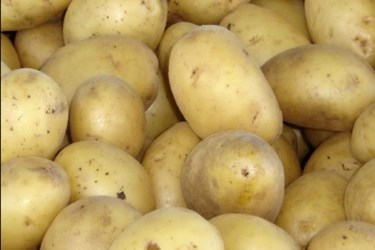USDA Gives Genetically-Engineered Potatoes The Thumbs Up
By Isaac Fletcher, contributing writer, Food Online

J.R. Simplot’s Innate potato may provide potential health benefits through genetic engineering, but uncertainty over long-term risks and degree of benefits raise some concerns
The U.S. Department of Agriculture (USDA) has recently approved for commercial planting a potato that has been genetically engineered to reduce the amounts of a potentially harmful ingredient that appear in French fries and potato chips. When potatoes are fried, a chemical called acrylamide, which is suspected of causing cancer, is produced. The genetic engineering involves altering the potato’s DNA so that when the potato is fried, the amount of acrylamide that appears is reduced. Additionally, the genetically-engineered potato is resistant to bruising. This will help potato growers and processors lower the instances of damage during shipping and storage, leading to fewer occurrences of lost value and unusable product. The potatoes have been developed by the J.R. Simplot Company of Boise, Idaho, a major supplier of McDonald’s frozen French fries.
Rather than solely providing benefit to farmers and producers, the potato is among a new wave of genetically-engineered crops designed to provide benefits to consumers. However, with many consumers calling into question the safety of genetically-modified foods, the new potato may face some challenges in winning over consumer approval. Such consumer concerns raise questions about whether the potatoes will be used by various food companies and restaurant chains.
In the 1990s, genetically-modified potatoes were introduced by Monsanto in an effort to provide resistance against the Colorado potato beetle. However, the market crumbled when major buyers of potatoes instructed suppliers to not grow them due to fears over consumer resistance. However, the new potato from Simplot has some advantages that may help it weather the tide of consumer uncertainty.
First of all, the potato aims to provide potential health benefits to consumers rather than just providing cost-savings to suppliers and producers. Furthermore, Simplot is a well-established power in the potato industry and has likely been laying the foundation for product acceptance among its customers. The other strength of Simplot’s potato is that, unlike many other genetically-engineered crops, the potatoes do not contain genes from any other species, instead, the potato contains fragments of potato DNA that serve to mute four of the potatoes’ own genes involved in the production of particular enzymes. For this reason, Simplot has chosen to call its product the Innate potato, an innocuous name that may help win over consumer acceptance. Haven Baker, head of potato development at Simplot, explains, “We are trying to use genes from the potato plant back into the potato plant. We believe there’s some more comfort in that.”
However, that is not to say that the Innate potato will not face roadblocks along the way. There are some questions over the long-term effects of this kind of engineering and, according to Doug Gurian-Sherman, a plant pathologist and senior scientist at the Center for Food Safety, much about RNA interference — the technique used to mute the genes — is not fully understood. Gurian-Sherman argues, “We think this is a really premature approval of a technology that is not being adequately regulated.” Additionally, the benefits of reducing acrylamide levels by 50 to 75 percent are still unclear.
